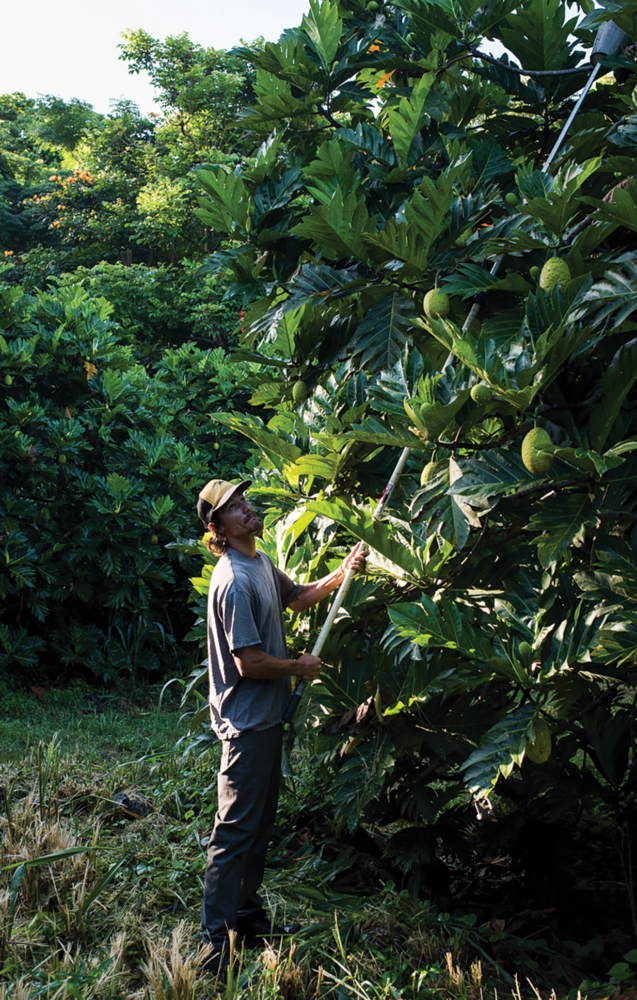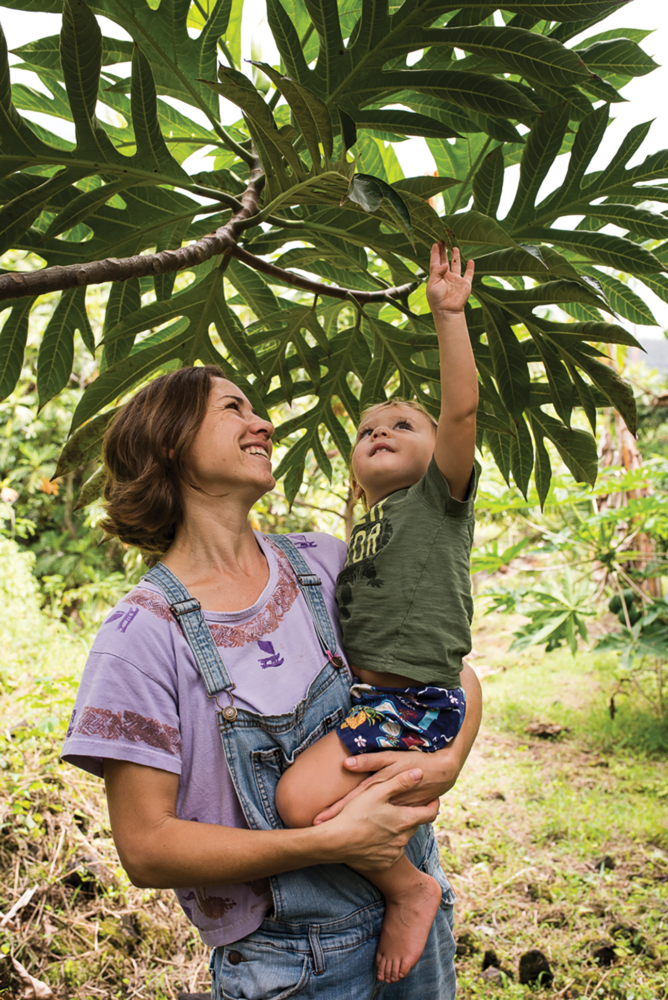When we see parallels between the events portrayed in moʻolelo and Hawaiʻi’s modern-day issues, it may be wise to listen to what the stories have to say.
Before the internet, before books, before libraries, there were oral traditions maintained through storytelling, song, and dance. The knowledge necessary to live a healthy life and build a thriving society was made memorable and transmissible, a sort of mobile library of a society’s knowledge.
For Hawaiians, one form of this was mo‘olelo, or oral stories, containing knowledge gained from observing the surrounding environment and learning how to thrive among the elements for over a thousand years.
In The Gift of Kū, a mo‘olelo documented by historian Mary Kawena Pukui, the god Kū decided to live among the people of Hawai‘i. He married a woman, had a family, and lived as a commoner for several years before a terrible famine hit. Unable to bear watching his children suffer, Kū decided to give up his earthly body to feed his family.
He sunk into the ground, and his wife wept upon that spot every day until, one day, a shoot came up. It rapidly grew into an ʻulu tree teeming with fruit.
The young family then had plenty to eat and plenty to share with neighbors, though the tree would only let the family of Kū pick from it. But soon, sprouts started to appear around the base of the tree, and the family broke them off to share with others. This was how ʻulu spread throughout Hawaiʻi.
You May Also Like: A Cozy ‘Ulu Recipe From a Breadfruit Connoisseur


The lessons contained within Hawaiian moʻolelo are not generalizations or platitudes. These stories held information so astute that many of their explanations for natural phenomena have been confirmed by science in recent years.
Volcanologists attempting to explain an event in Kīlauea’s geologic past, for example, went through several hypotheses before settling on the current theory within the last 30 years. This scientific explanation mirrors the stories told by the Hawaiians recorded 200 years ago, which were disregarded by scientists at the time.
These stories also offer rational explanations and actionable advice, honed over countless generations, for the specific conditions of life in the Hawaiian Islands— the same conditions we live in today.
Today, as in the moʻolelo, Hawaiʻi has a critical food problem. Every year, we spend $3 billion to import as much as 90 percent of our food.
According to the Hawai‘i Emergency Management Agency, we are so reliant on imports that there is only a fiveto seven-day supply of food in the state at any time. If anything were to happen to the Port of Honolulu, the only port in Hawaiʻi capable of receiving the large container ships that bring our food, we could very quickly find ourselves with a severe food shortage.
The problem has nothing to do with our capacity to grow enough food. According to a 2019 study, pre-contact Hawaiian agricultural systems were able to grow up to 1.12 million tons of food per year—enough to feed a population of 1.2 million people—using just 6 percent of Hawaiʻi’s land.
In comparison, today, 22 percent of Hawaiʻi’s land is actively used for agriculture. Despite that, only 166,450 tons of food are grown for local consumption— enough to feed just 180,000 people. The rest of that land is used to grow export commodities like seed corn and coffee.


The problem is not one of ability but of approach. Dana Shapiro, general manager and founding member of the Hawai‘i ‘Ulu Cooperative, believes we should listen to the lesson of the moʻolelo and look to ‘ulu as a multifaceted solution to our food crisis. “The stark metaphor that the moʻolelo paints of ‘ulu as a savior, as the tree of life, is relevant today in so many different ways,” she says.
The most obvious is food production.
ʻUlu are extraordinary producers with yields up to 800 pounds of fruit per tree per year for more than 50 years. And because the fruit is extremely versatile, adding ʻulu to our diets wouldn’t require any real change to modern eating habits. At different points in ripeness, ʻulu can be used anywhere you might use potatoes, mashed to make pizza dough or tamale masa, dried and ground to make a gluten-free flour, or eaten raw as a custardy dessert.
Theoretically, we could significantly offset our food imports by increasing local ʻulu production.
Equally important, however, is the need to extricate ourselves from the perspectives that got us into this situation in the first place. ʻUlu could also play an important role in ensuring we don’t continue to make the same mistakes.
“Modern life [rests on] the Western complex of us versus nature and us above nature,” Shapiro says. “But in the indigenous perspective, we are part of nature. If we change the way we look at our natural resources, we could have so much more abundance and sustainability than we do now. I think ʻulu really embodies that.”
The stark metaphor that the moʻolelo paints of ʻulu as a savior, as the tree of life, is relevant today in so many different ways.
Dana Shapiro, Hawaiʻi ʻUlu Cooperative
Brought to the Hawaiian Islands tied to the hulls of Polynesian voyaging canoes, ‘ulu was the staple crop in areas unable to support water-intensive loʻi or nutrienthungry ʻuala fields.
While scattered ʻulu trees were common throughout the islands, on the geologically younger islands of Maui and Hawai‘i, ʻulu production was highly systematized and highly productive. One spot on the slopes of Hualālai, for example, is estimated to have produced up to 64,000 tons of ʻulu per year.
To achieve this harvest, Hawaiians followed the rules of nature to build resilient systems that encouraged abundance. ʻUlu were not grown in monocrop orchards but in complex, multi-species food forests resembling natural forests in their mixture of ground cover, understory, and canopy crops.
ʻUlu were grown alongside other useful plants such as kukui, ʻōhiʻa ʻai, and dryland kalo, and the diversity within these systems created conditions that could withstand outlier weather events and were largely free from pests and disease.


Today, the Hawai‘i ʻUlu Cooperative aims to make ‘ulu mainstream again by supporting systems similar to those of pre-contact Hawaiians. The co-op buys ʻulu from its member farms, processes it into products such as frozen cubes and flour, and is responsible for marketing and sales.
For small farmers, ʻulu can be a tricky crop, as its seasons are fast and abundant, and the fruit ripens quickly once picked; unless a farm has a lot of trees and the means to process the fruit, growing ʻulu can sometimes be more trouble than it’s worth. The shared resources of the co-op enables small, diversified farms with few ‘ulu trees to earn money from them and contribute to the market supply.
It also encourages members to remain diversified by reducing the need for farms to scale up production unsustainably just to cover the costs of processing and distribution.
Since its founding in 2016, the co-op has made sizable inroads with this model. Just five years ago, it was difficult to find ʻulu if you didn’t know someone with a tree. Today, ʻulu is on more local restaurant menus than ever before.
Frozen ʻulu and flour produced by the co-op are available in numerous grocery stores throughout the islands. Booths sell ready-to-eat products like ʻulu hummus and ‘ulu chips at every farmer’s market. And as the people of Hawaiʻi begin to eat ʻulu again, the increasing demand supports the growth of a fully local industry.


With this growth, we begin to move towards the second lesson of the moʻolelo: Rather than only picking from the parent tree, planting the offshoots will ensure more food for all, allow the parent tree to thrive and provide greater resilience in the face of disaster.
Our current system relies far too heavily on one tree.
By diversifying our food economy, including building up an ‘ulu industry, we can ensure the continued wellbeing of the people of Hawaiʻi.

